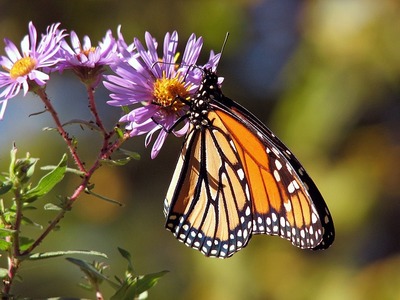Monarch Larva Monitoring Project Sees Large Decline in Monarchs
Tuesday, June 6th, 2023 -- 9:05 AM

(By Gaby Vinick, Wisconsin Public Radio) What started in a lab in the 1990s has evolved into a mass volunteer effort to track the monarch butterfly.
According to Gaby Vinick with Wisconsin Public Radio, Karen Oberhauser was a professor at the University of Minnesota when she and her students started collecting data on the monarch butterfly population in 1996.
The next year, they started recruiting volunteers to help what became the international Monarch Larva Monitoring Project. "The goal of the project is to collect data on monarchs during the breeding phase of their annual migratory cycle," Oberhauser said.
"What the Monarch Larva Monitoring Project does is track the distribution of monarchs throughout that northern breeding range and also their abundance." Four years later, she moved to the University of Wisconsin-Madison.
The project is now run jointly by the UW-Madison Arboretum and the Monarch Joint Venture. In 2013, Oberhauser was named a White House Champion of Change for Citizen Science for her work.
Volunteers go out into milkweed patches (in their backyards, nature centers, along a road by a school, anywhere) and count the number of eggs and caterpillars they see on the plants. They monitor at least 10 milkweed plants on a weekly basis and track the number of monarchs per plant.
The effort has hundreds of volunteers across the country. Yet the monarch population is declining, a trend Oberhauser has seen over the last 30 years. "I feel like anything that we see in our lifetime, to a human, feels rapid. So I've been studying monarchs since the 1980s, and I've seen a huge decline," Oberhauser said. "I am worried that it feels fast when it's in a lifetime. And if this decline continues, then they'll be gone."
Just last year, the monarch butterfly was classified as an endangered species by the International Union for Conservation of Nature. Every year, millions of monarchs migrate south, where those east of the Rocky Mountains settle in Mexico and those west overwinter in California.
During the 2022-2023 winter season, the Eastern migratory monarch butterfly population plunged by 22 percent, according to data from the World Wildlife Fund. Researchers with those groups pointed to deforestation, widespread herbicide application and extreme weather conditions as reasons for the decline in numbers.
On top of that, Oberhauser said volunteers are seeing year-to-year variations in the population mostly driven by extreme weather conditions.
Feel free to contact us with questions and/or comments.




